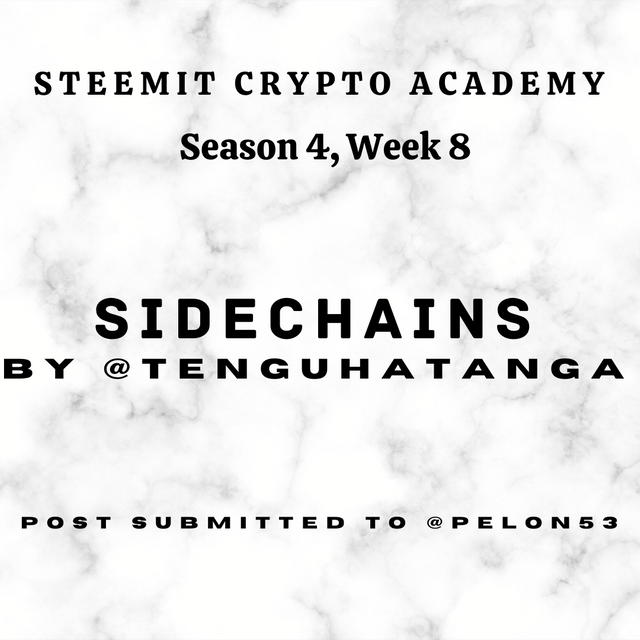
THE CONCEPT OF SIDECHAINS
A sidechain is a blockchain that is tightly linked to the main blockchain (in Liquid Network case to the Bitcoin blockchain and in ZK-Rollups case to Ethereum blockchain). Sidechains are two-pegged to the parent blockchain. This allows for smooth digital asset exchange across the two networks.
The following is the procedure of transferring funds between two blockchains (and vice versa):
A user sends a certain quantity of coins to an output address; the coins are locked (or frozen); the transaction is complete; the confirmation is transmitted to all chains; A user can utilize money on the sidechain after a waiting period (for security reasons).
Question 1. Explain in detail the Sidechains with the use of ZK-Rollups.
ZK-ROLLUPS
ZK-Rollups is a sidechain of Ethereum blockchain that belongs to Layer 2 which offers solutions for the scalability problem with the blockchain.
It is a solution currently being created but has an interesting potential. Just like in all layer 2 solutions ZK-Rollups seeks to improve scalability by processing large amount of transactions in one transaction.
Hundreds of transfers are rolled up into a single transaction with ZK-Rollups. Using a technique known as Zero Knowledge Proof, the Smart Contract assigned to this task will deconstruct and validate all transfers in a single transaction. This method is used to publicly display and record block validity on the Ethereum blockchain without jeopardizing the information's security. By lowering the amount of data retained in a transaction, ZK significantly reduces computational and storage resources required for block validation.
THE WORKING SYSTEM OF ZK-ROLLUPS.
Zero Knowledge Rollups has two categories of users: those who make transactions and those who certify them. The first type of user is the transient, who creates and sends their transaction to the network. In its simplest and most streamlined form, a transaction's data consists of five elements: the address to which funds are sent, the address to which funds are received, the transaction's amount, the network fee, and a number called a nonce.
The data is stored in two Merkle trees in the Smart Contract used to transfer data in a single transaction: addresses in one and transfer amounts in the other.
Certifiers, on the other hand, generate a Rollup by collecting a significant number of transactions transmitted to the network. Because they must stake the Smart Contract's security, these parties are incentivized to operate honestly. The certifiers' primary responsibility is to create the SNARK evidence. In a word, the SNARK proof is a hash function that indicates the difference between the current state of the blockchain and the previous state of the blockchain. A snapshot of the Blockchain state is captured at time before transaction computation. After that, the SNARK test compares a snapshot of the Blockchain before transfers with a snapshot of the Blockchain after transaction processing reporting only changes in a verifiable hash to the main network. After outsourcing the task to layer 2, the main blockchain now has the ability to verify the right state and calculation of transactions.
The experience with ZK Rollups will differ dramatically depending on whether the end user is using the Ethereum Blockchain through DeFi, NFTs, or conventional transactions. In fact, gas will be far less expensive than it was previously, allowing the Blockchain and its corresponding layer 2 to accommodate a greater number of transactions.
ZKSYNC
This is the first real platform for ZK-Rollups algorithm. It has been in existence since 2020. In spite of the fact that it is new, it has proven beyond reasonable doubt as the a solution to future blockchain problems. Compared to any other method of scaling the Ethereum Blockchain, the ZK Rollup with zkSync has no upper limit on the number of transactions it can safely manage on layer 2. All protocols or DApps can quickly move their capital and migrate from L1 to L2, taking advantage of a transaction rate of over 2000 transactions per second. The project is totally opensource, and it outperforms competing algorithms in terms of scalability.
Zksyn is usually be connected to the Ethereum Metamask to work.
The connection can be done through zkSync platforms site. By clicking on the provided link, one can connect the zkSync wallet/platform to Metamask by following the steps I listed below.
Step 1. Once you click on the link to the site, click on the menu bar and click zk Tools and select zkWallet.
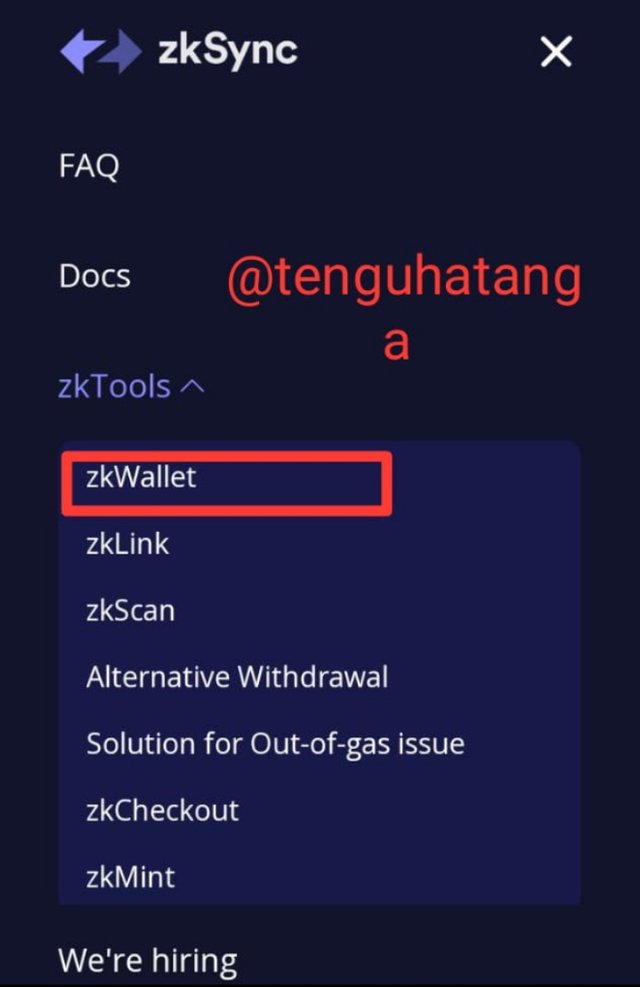
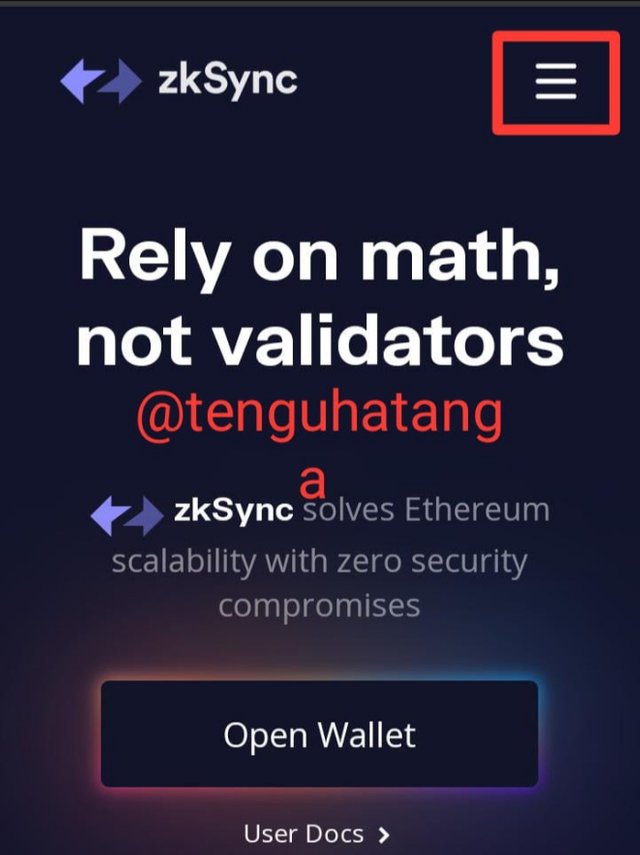
Step 2. It would navigate to a new page, click on wallet connect
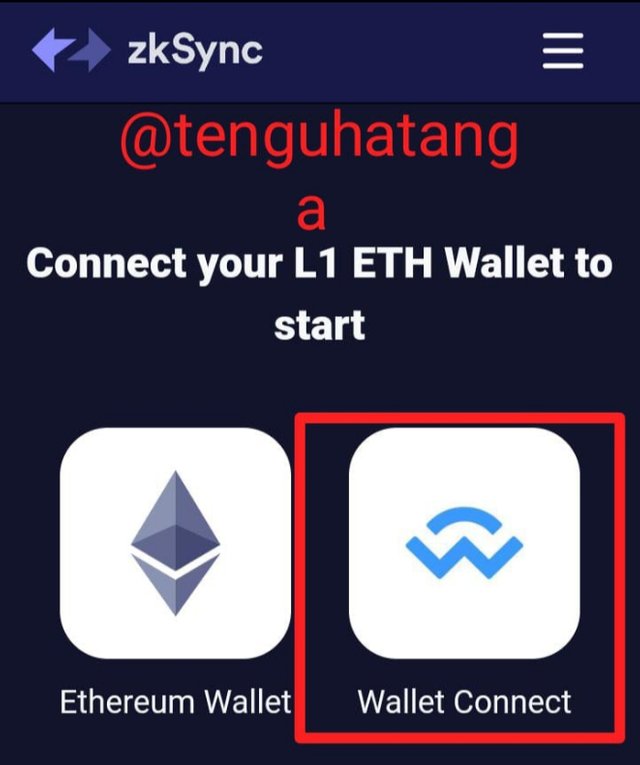
Step 3. Click connect
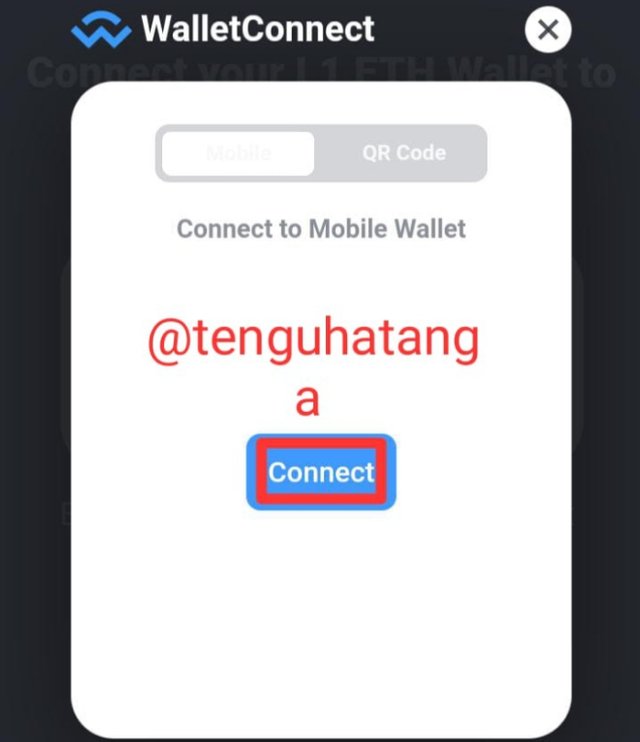
Step 4. Select Metamask and click just once.
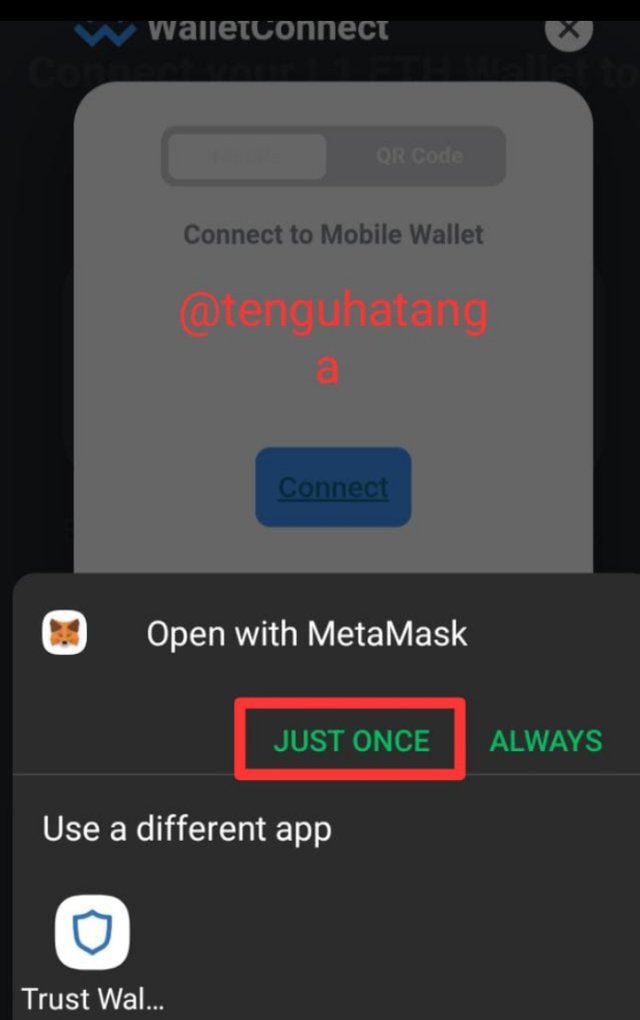
Step 5. Click connect on the page that follows. The metamask wallet have been successfully connected.
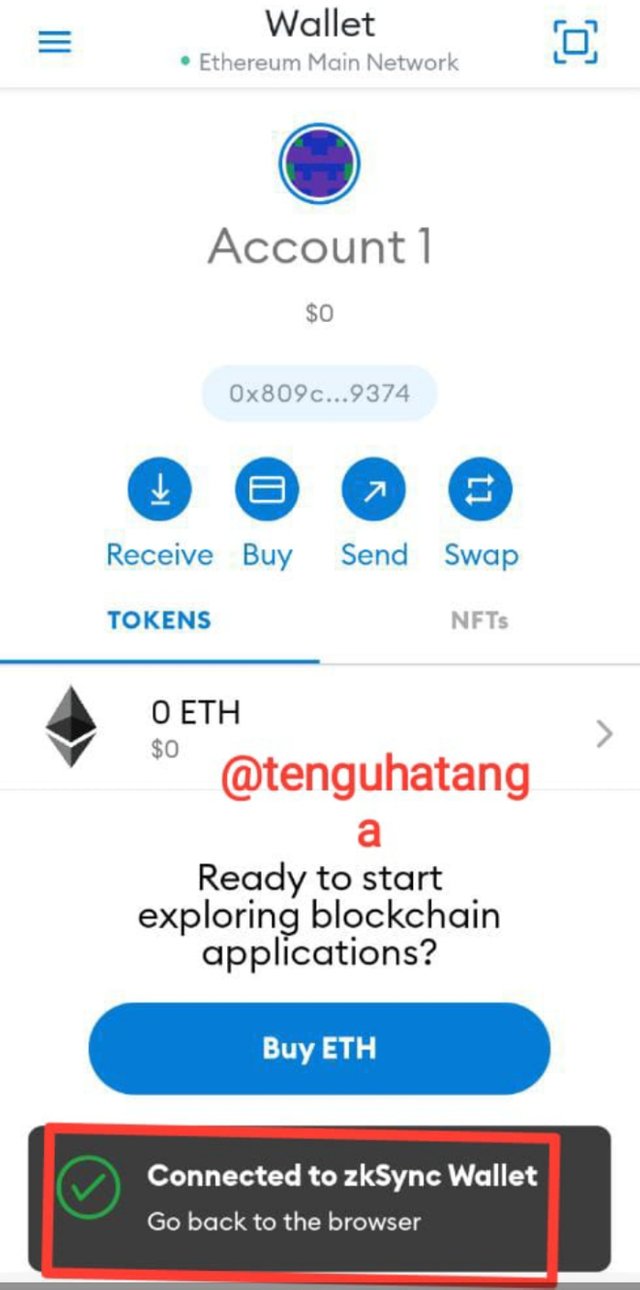
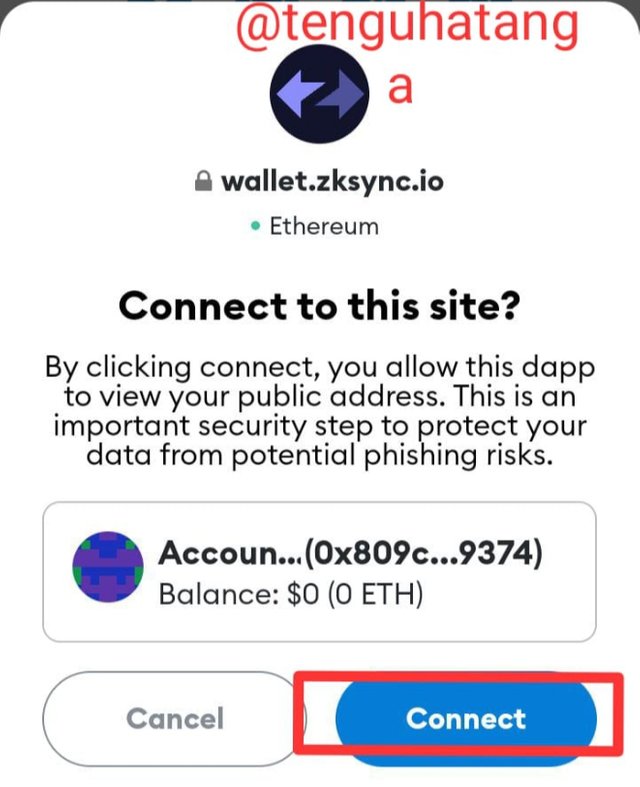
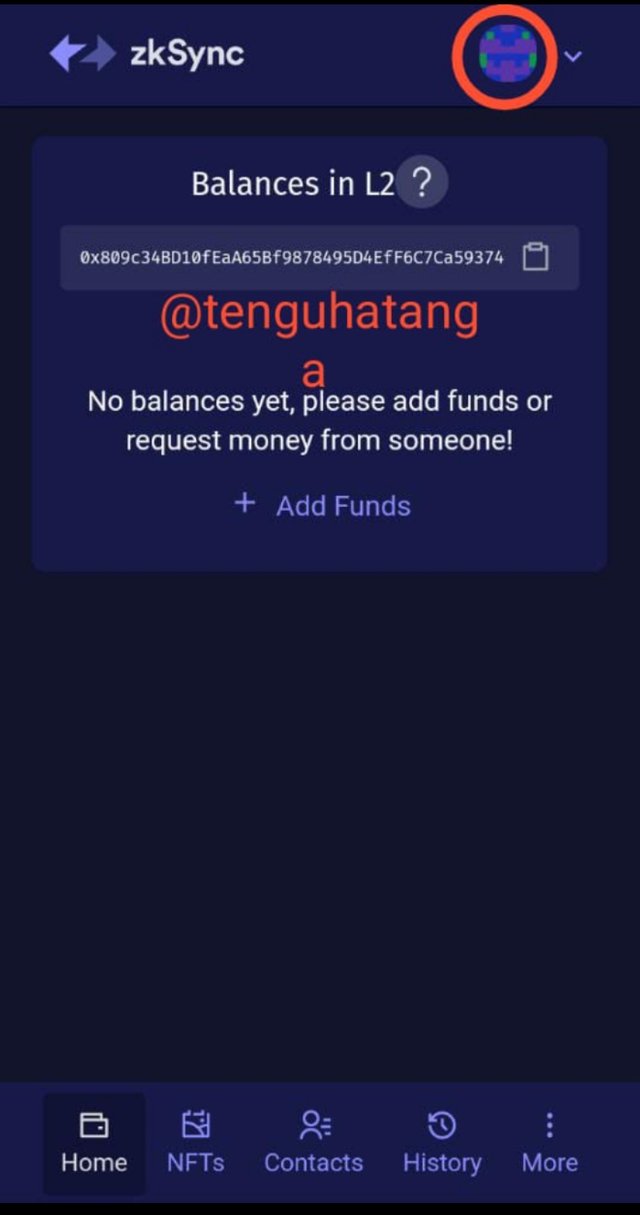
The connected wallet.
Question 2. Explain the Liquid Network side chain
LIQUID NETWORK SIDECHAIN.
Liquid Network is a Bitcoin federated sidechain that permits the generation of digital assets and allows quicker transactions.
A strong federation concept was introduced by blockstream in 2017.
A Strong Federation is a group that functions as a unit to assure forward development of a sidechain by acting as a mutually-incentivized protocol adaptor between a "anchor chain" and one of its sidechains. The participants build a Byzantine-robust smart contract using cryptographic techniques and secure hardware, in which each "functionary" is monetarily encouraged to behave in the best interest of the network by mutually agreed-upon norms.
Participants in the sidechain network are accountable for the chain's security because each sidechain is an independent entity. A block signer and a watchman are two important roles that a functionary plays. A functionary in the first role was required to keep track of block height. The block verification of two-thirds of all block signers is required in a federated Liquid Network structure. A functionary with the watchman duty manages and secures the federation's Bitcoin.
It should be noted that Bitcoins transfered to to the Liquid network is called liquid Bitcoins (L-BTC). L-BTC is the form Bitcoin can operate in the Liquid network. Bitcoin is pegged at 1:1 for L-BTC.
The process by which coins are sent between the Liquid network and Bitcoin blockchain is referred to as peg-in.
HOW LIQUID NETWORK OPERATES.
A Bitcoin user delivers BTC to an output address; the federation or functionaries lock and guard the coins (this eliminates the chance of spending coins somewhere else) – On the Liquid Network, a user can use L-BTC after waiting for 102 confirmations on the Bitcoin network.
Peg-out refers to the process of sending L-BTC to the parental chain. After two confirmations from the Liquid side, cash will be released and sent directly to your BTC wallet. The process could take up to 40 minutes depending on network conditions.
The two major features of liquid network are:
Private transactions
Anyone may see the transactions that took place on Liquid Network. The project's creators, on the other hand, included a private transaction (PT) function.
By masking the amount of a transaction from anyone who isn't involved in transaction processing, private transaction strives to give users more privacy. Traders who don't want to divulge their tactics can employ PT, according to official Liquid documents, and the transaction amount will not be reflected anywhere.Creation of digital currencies.
Anyone interested in cryptocurrency can use Liquid Network to create their own cryptocurrency. Digital collectibles, tokenized fiat, altcoins (cryptocurrencies other than Bitcoin), attested assets, and reward points can all be created on the platform. A security token that represents a tradable financial instrument can also be created. Liquid provides the platform and tools for the production of new assets, but it is not responsible for the asset's verification.
Question 3. Describe the steps to connect the Metamask wallet and the Polygon network wallet. Show screenshots.
The steps below can be followed to connect the Polygon network wallet to Metamask. The steps I would describe are for the Android version of the wallet.
Step 1: Visit the Polygon network wallet using the link.
Step 2: On the first page, click on the face of Polygon wallet.
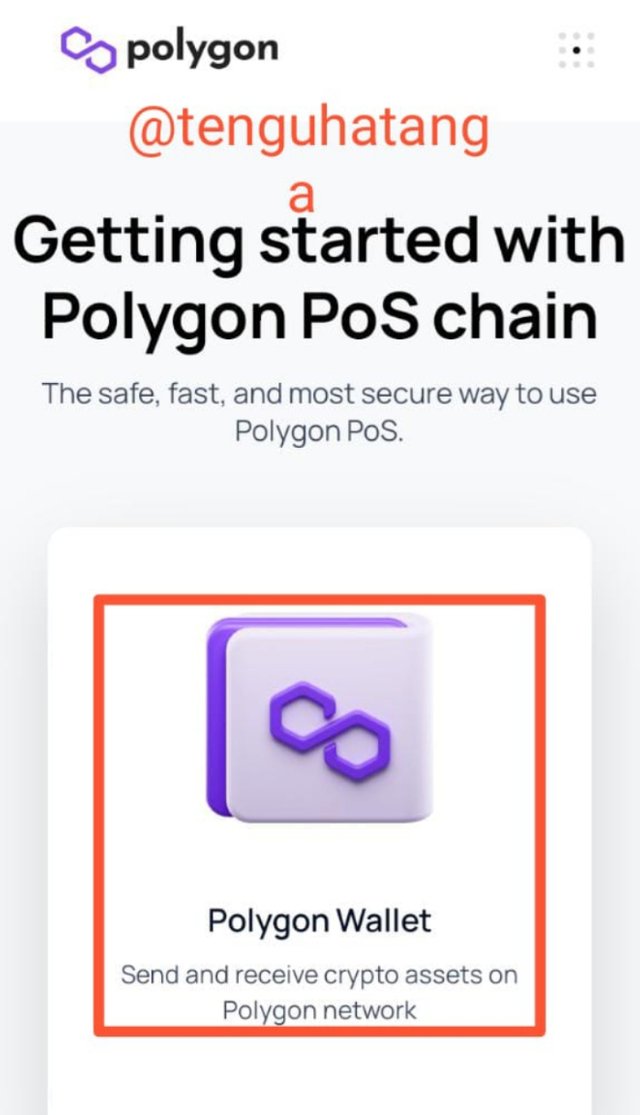
Step 3: Click WalletConnect
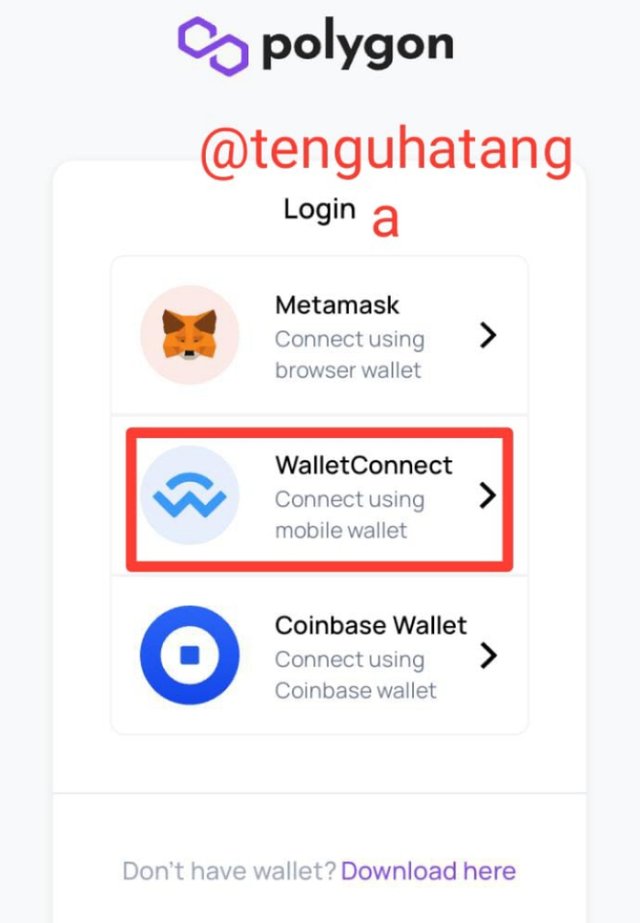
Step 4: Click connect
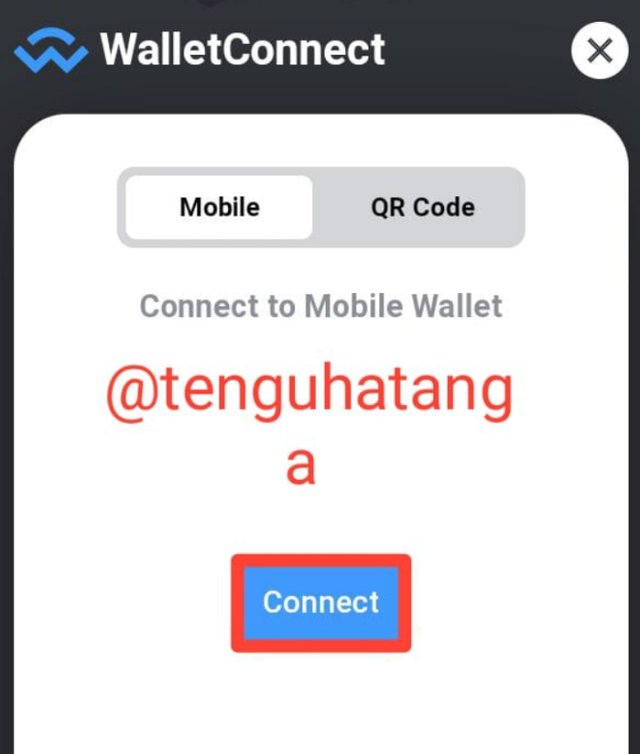
Step 5: Choose open with metamask and click just once.
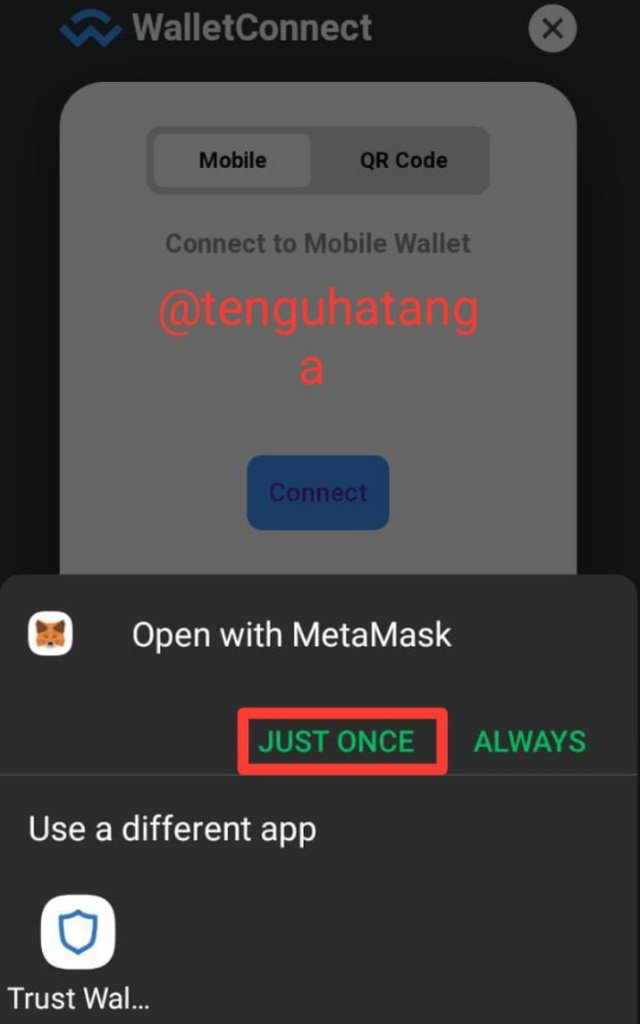
Step 6: Click connect. Also click sign on the page that follows.
The wallet has connected.

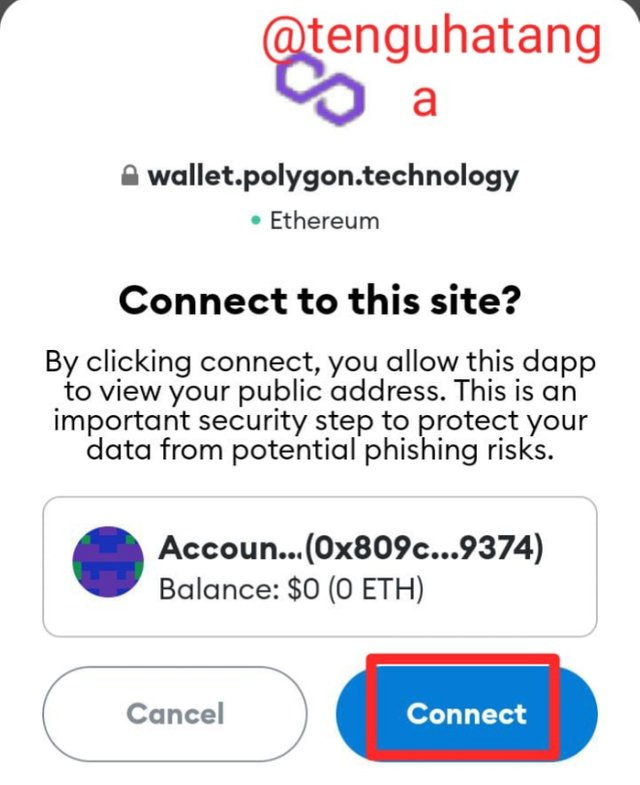
Step 7: To use the polygon network wallet has connected to Metamask. To access the wallet click on the menu and select browser at Metamask interface.
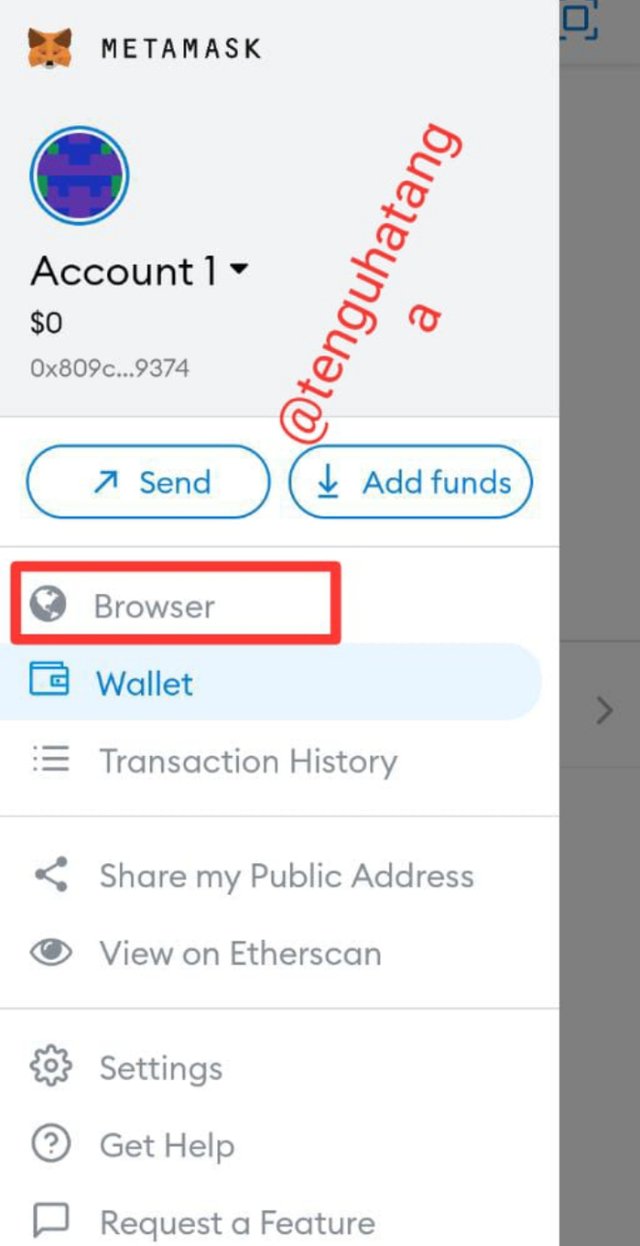
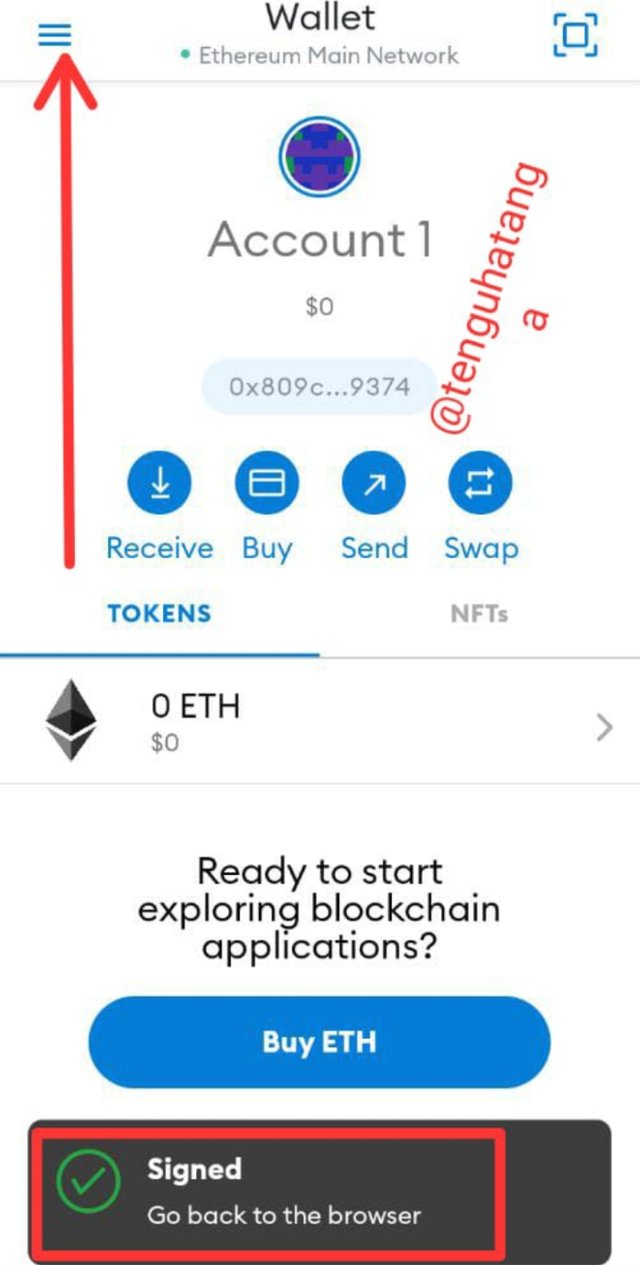
This navigates to the browser to show the connected metamask. From here one can perform the desired operations
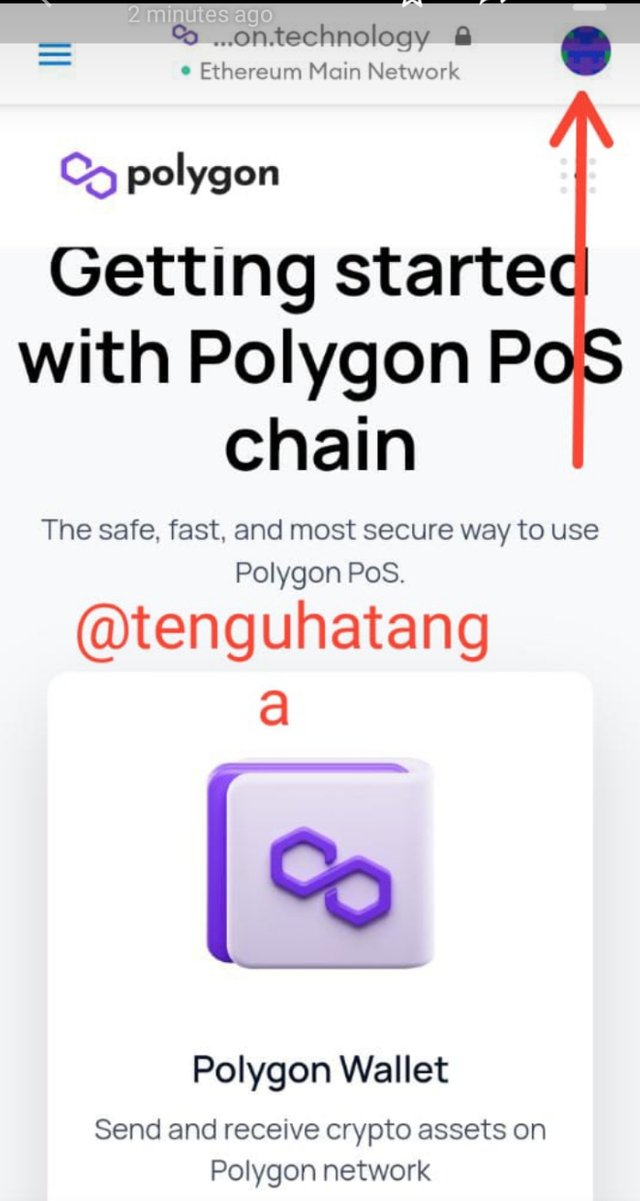
Question 4. According to the polygonscan block explorer, when will the block 25,000,000 be generated? Show screenshot. Explore the 12,000,000 block, at that time, what was the price of the Matic? Show screenshots.
This is the polygonscan explorer site
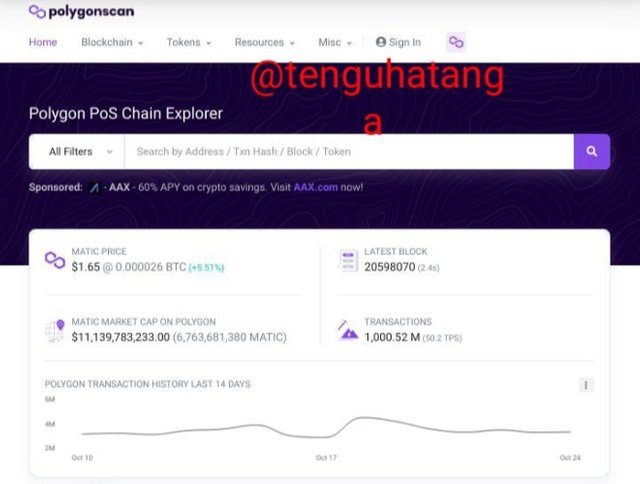
To find the date when the block height 25,000,000 is going to be produced, I wrote it on the search box and searched.
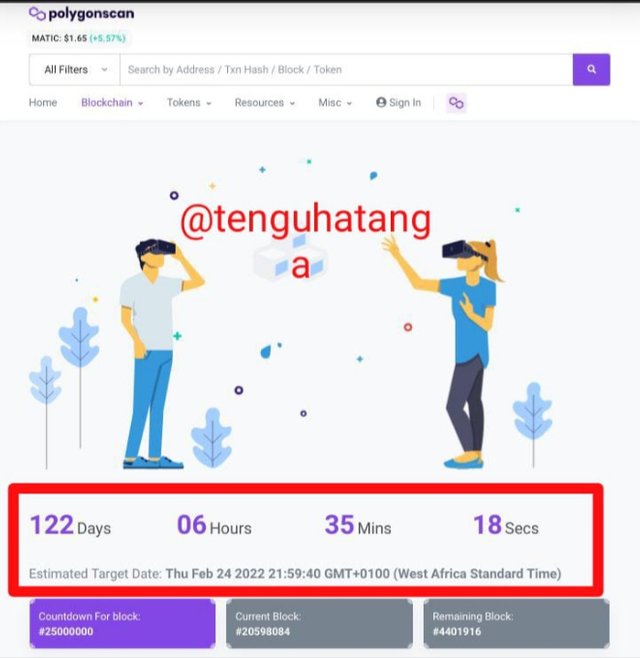
Screenshot showing the information on the date of the block height of 25,000,000.
The estimated date for the generation of block 25,000,000 according to the polygonscan is February 22, 2022 21:59:40 GMT+0100 (West African Stand Time).
The block 12,000,000 according to the Polygonscan explorer shows that the block was generated 225days 5hours ago. To be specific, the block was generated on the 14th of March 2021 09:35:48 AM + UTC. A total of 14 transactions were included in the block.
The price of MATIC then was $0.38.
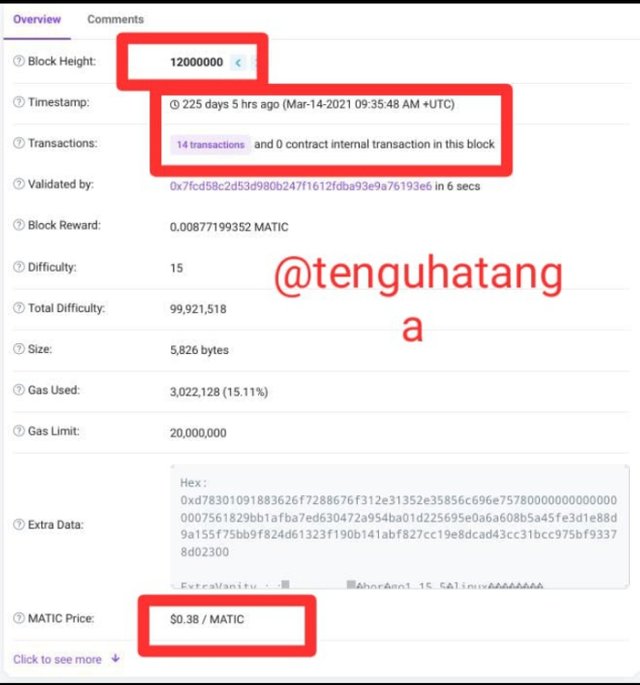
.jpeg)